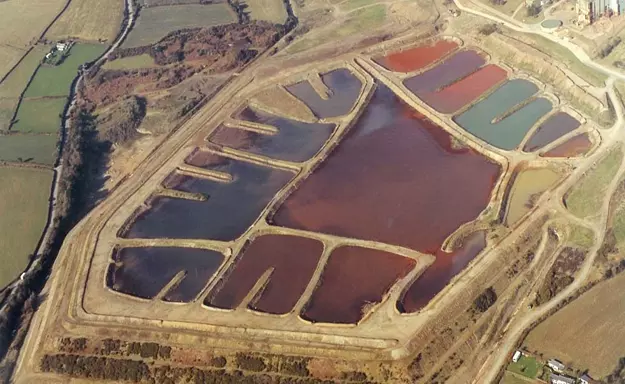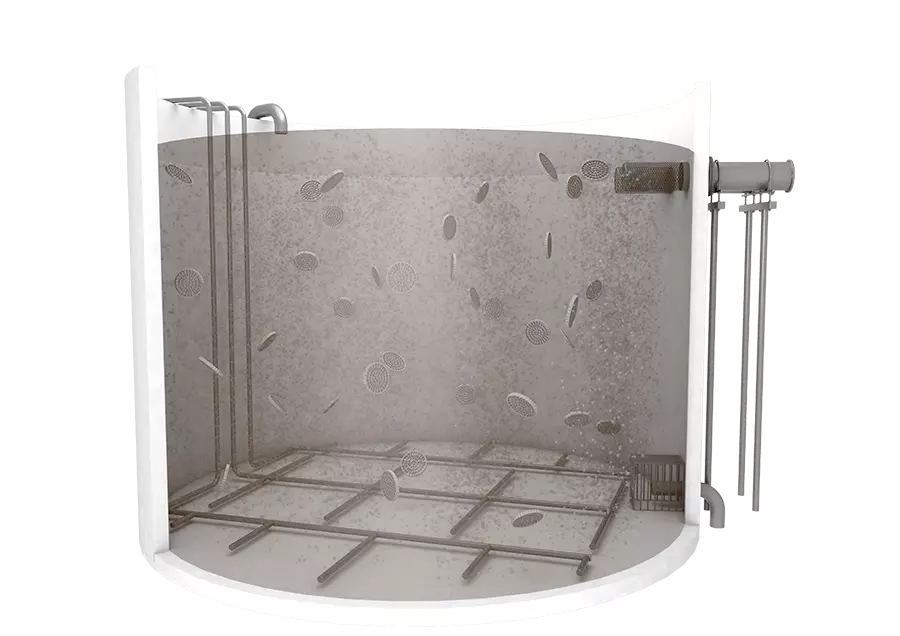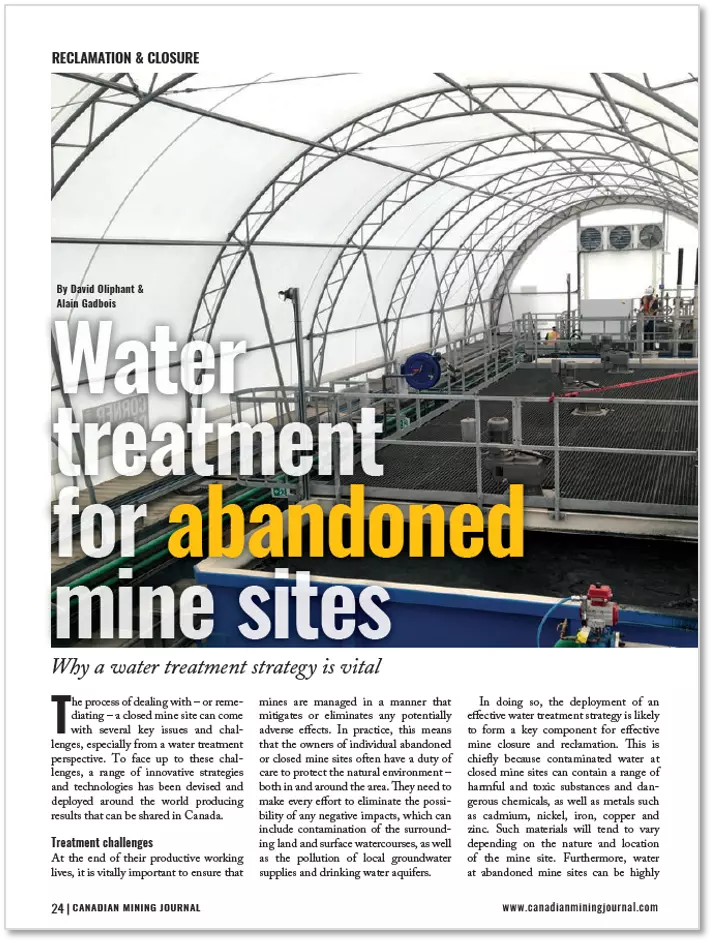Water Treatment for Abandoned Mines
Why a water treatment strategy is vital
The process of dealing with - or remediating - a closed mine site can come with several key issues and challenges, especially from a water treatment perspective. To face up to these challenges, a range of innovative strategies and technologies has been devised and deployed around the world producing results that can be shared in Canada.

Treatment challenges
At the end of their productive working lives, it is vitally important to ensure that mines are managed in a manner that mitigates or eliminates any potentially adverse effects. In practice, this means that the owners of individual abandoned or closed mine sites often have a duty of care to protect the natural environment - both in and around the area. They need to make every effort to eliminate the possibility of any negative impacts, which can include contamination of the surrounding land and surface watercourses, as well as the pollution of local groundwater supplies and drinking water aquifers.
In doing so, the deployment of an effective water treatment strategy is likely to form a key component for effective mine closure and reclamation. This is chiefly because contaminated water at closed mine sites can contain a range of harmful and toxic substances and dangerous chemicals, as well as metals such as cadmium, nickel, iron, copper and zinc. Such materials will tend to vary depending on the nature and location of the mine site. Furthermore, water at abandoned mine sites can be highly acidic, which can pose a dangerous threat to human, animal and plant life.
pH adjustment
There is a wide range of factors and issues to consider from a water treatment perspective when dealing with an abandoned mine or remediating and reclaiming a mine site. To begin with, many abandoned mines have been 'orphaned' for a substantial period. The first step for a project manager often centres on the process of obtaining appropriate basic information relating to the site. This part of the process is, in many ways, identical to that which would apply for any water treatment project - namely the specification of the volume, composition and flow rate of the water to be treated, as well as the establishment of target objectives.
Several key challenges may be encountered at this stage, including the fact that abandoned mine sites are commonly located in remote areas, with limited available space to carry out operations. Often project teams will be required to conduct activities in very cold - nordic - conditions with sensitive receiving streams.
In addition to these underlying conditions, water treatment companies will also often be required to implement rapid solutions - perhaps in response to an emergency such as a damaged dam, or in order to expedite the restart of production activities at mine sites that are still economically viable. In many cases, such circumstances may imply a short treatment time - in some cases meaning that a water treatment company is only in situ at a site for around two years, and where package plants (in basic terms a ‘no concrete' solution) becomes the basic offering.
Moreover, the majority of mine remediation projects will also entail pH adjustment - or neutralisation - and the removal of metals and Total Suspended Solids (TSS). Overall toxicity removals will also have to be considered, as well as site specific targets - for example, relating to thiosalts.
Passive treatment
In an effort to respond to the often complicated and challenging conditions prevailing at abandoned mine sites, a wide range of appropriate technologies and techniques have been developed globally. Many such techniques fall into the category of'passive' treatment - which employs naturally occurring processes to neutralize waterborne acids and oxidize or lower metal contamination levels.
In broad terms, passive treatment technologies can be divided into biological and geochemical categories. Biological technologies tend to be based on the activity of bacteria - and may also deploy some form of organic matter to promote reduction in microbial sulphates and adsorb contaminants. Examples of dedicated passive treatment plants include constructed wetlands, vertical flow wetlands, and bioreactors - with many employing a combination of aeration, settlement ponds and reed beds to remove contaminants via natural chemical reactions, often with the assistance of bacteria that is naturally present in the mine water itself.
Geochemical-based passive systems generally introduce materials that generate alkalinity - such as limestone - to mine water. An increasingly common passive geochemical approach is the use of Reducing and Alkalinity Producing Systems (RAPS), which entail the use of compost and limestone beds to raise pH levels and stimulate iron removal. Elsewhere, experimental and full scale containerized Vertical Flow Reactors (VFR) have been successfully deployed. In one example, the users of a VFR at an abandoned mine site in Finland have reported the removal of 95% of the iron and about 80% of the arsenic in the mine water.
Active treatment
Although passive treatments prove effective in many cases, their use is not always possible. In some cases, the extremely poor quality mine water will require some form of chemical or other active treatment as the only viable solution.
One notable technology is a ballasted clarification technology, which works by flocculating water with microsand and a polymer specially designed draft tube. The microsand enhances the formation of robust flocs and acts as ballast, significantly increasing their settling velocity. This patented Actiflo® technology, developed by Veolia Water Technologies, is capable of delivering very low water metal concentration at parts per billion (ppb) levels (for example, 1 ug/L) in mine site effluent.

Such technology has already been used for the treatment of contaminated water at a number of mine sites across the world. One example is at an abandoned mine site in Yukon, where a mobile version of the Actiflo system with a treatment capacity of 5,500 m3/day was used for the emergency removal of TSS from water containing a high concentration of ferrous iron - with the option of further upgrades to a solution capable of removing metal and reducing toxicity if required. In this case, the system worked by oxidizing ferrous iron to ferric iron, which acted as the system's coagulant. One of the other novel solutions that Veolia has been implementing for decades focuses on the integration of biological treatments adapted to the particular set of issues faced at cold mine sites. This has demonstrated the use of very cold nitrification as part of its AnoxKaldnes™ Moving Bed Biofilm Reactor (MBBR) attached film process.
Nanofiltration membranes
Another solution that can be a part of the technology arsenal for abandoned mine water treatment are nanofiltration (NF) membranes. NF is often used to soften and remove organic matter, or synthetic organic matter. As well as having a lower power consumption than reverse osmosis, NF membrane applications typically operate at between 3 to 30 bar and can be used for processing large continuous volumes of water.
They have been successfully demonstrated at a remote abandoned nickel mine site in Quebec. Here, a pond was dewatered using a mobile nanofiltration system to remove more than 99.9% of the toxic thiosalts present in the water stream.
Depending on toxicity levels, metals removal and pH adjustment needed for the water at the abandoned mine sites, different levels and configurations of water treatment technology will be needed. Owners of individual abandoned or closed mine sites have a duty of care and legal obligation to ensure a sufficient water treatment plan is in place.
(Originally published in the June / July 2019 issue of Canadian Mining Journal)



